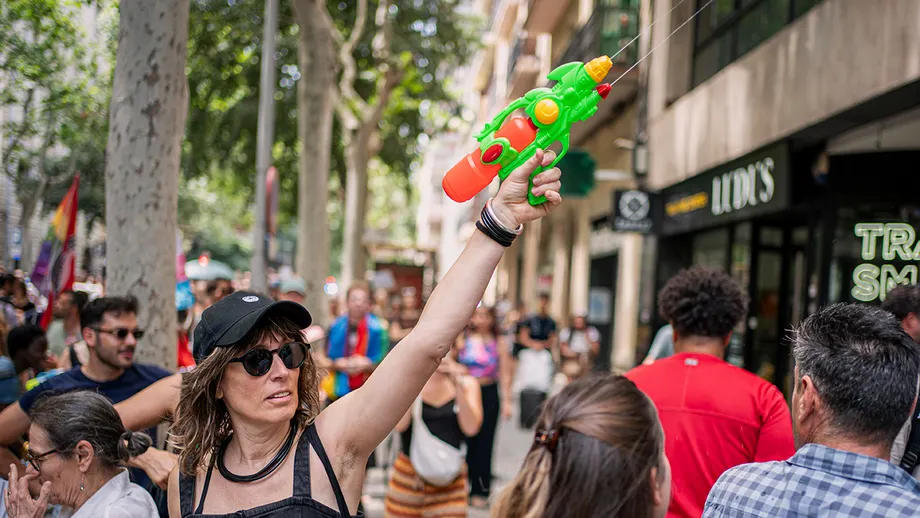In recent weeks, tourists vacationing in Europe’s most iconic cities have found themselves unexpectedly drenched, not by summer rain but by water guns wielded by angry protesters. The incidents, largely symbolic but deeply charged, are the latest manifestation of the growing European anti-tourism trend, which has intensified post-pandemic as locals push back against the negative effects of mass tourism.
What started as scattered protests and graffiti has evolved into coordinated demonstrations, social media campaigns, and even local policy changes. The message is clear: many residents are fed up with being overrun by tourists, and they’re no longer staying silent.
What Is the European Anti-Tourism Trend?
The European anti-tourism trend refers to the mounting public resistance in major European destinations against the overwhelming influx of tourists. This movement has gained traction in cities such as Barcelona, Venice, Amsterdam, and Lisbon—places where tourism, once a prized economic engine, is now viewed by many as a source of overcrowding, gentrification, and environmental strain.
While tourism contributes significantly to local economies, the benefits are increasingly outweighed by the downsides. Residents in affected cities cite unaffordable housing, excessive noise, traffic congestion, and the erosion of local culture as key grievances.
Recent Protests: Water Guns and Direct Action
In Barcelona and other Spanish tourist hubs, activists have taken to the streets with water pistols in hand, symbolically “cleansing” their neighborhoods of mass tourism. Tourists lounging at beach bars or strolling through historic districts have been surprised by these nonviolent but disruptive actions.
Some protesters wear masks and carry signs reading “Tourists Go Home” or “This is Not a Theme Park.” These protests are designed to spark dialogue and grab international headlines, and they’ve succeeded in doing just that.
In Venice, anti-tourism activists have staged sit-ins at cruise ship docks, while in Amsterdam, protesters have launched online campaigns encouraging travelers to visit other, less congested cities.
Why the Backlash?
Several underlying issues are driving the European anti-tourism trend:
- Overtourism: In many cities, the number of tourists vastly outnumbers the local population during peak seasons. Venice, for example, receives around 20 million tourists annually, compared to a resident population of under 50,000 in the historic city center.
- Housing Crisis: Platforms like Airbnb have made short-term rentals more profitable, pushing locals out of the housing market and driving up rents. Entire neighborhoods in cities like Lisbon and Barcelona have effectively become hotels.
- Cultural Erosion: As local businesses cater more to tourists, traditional shops and community services are replaced by souvenir stands, global chains, and trendy cafés aimed at Instagram users rather than residents.
- Environmental Impact: Mass tourism contributes to pollution, strain on local infrastructure, and degradation of natural and cultural heritage sites.
Government and Community Responses
Governments have begun to respond to these rising tensions. Barcelona has imposed stricter regulations on short-term rentals and limited the number of cruise ships docking in its port. Venice now requires day-trippers to pre-book and pay an entrance fee, while Amsterdam has launched an aggressive campaign to “discourage nuisance tourism” and reduce stag party traffic.
These measures are aimed at achieving a more sustainable balance between welcoming visitors and protecting residents’ quality of life.
Rethinking Tourism: The Road Ahead
As the European anti-tourism trend continues to grow, there’s an increasing push for more sustainable and respectful travel practices. This includes encouraging “slow travel,” which favors extended stays over quick visits, and promoting lesser-known destinations to ease the pressure on hotspots.
Travelers also play a crucial role in reversing the trend. By choosing local businesses over global chains, respecting community norms, and avoiding over-touristed destinations, tourists can help preserve the very charm that draws them to Europe in the first place.
Conclusion
The European anti-tourism trend is not merely a backlash; it’s a call to action. It highlights the urgent need to redefine how we travel, how we consume, and how we respect the places we visit. If governments, businesses, and tourists can collaborate on solutions, Europe can continue to welcome visitors without sacrificing the well-being of the people who call it home.
Never Miss a Beat! Subscribe for the Latest News & Exclusive Updates!
